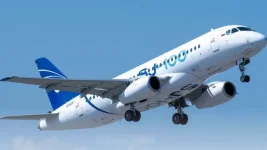- Views: 4K
- Replies: 28
In a significant move to counter the growing military capabilities of neighbouring Azerbaijan, Armenia is reportedly considering the purchase of India-made Su-30MKI fighter jets.
This potential acquisition, which could include advanced BrahMos and Astra missiles, highlights a major shift in Armenia's defence strategy and a deepening of its military alliance with India.
The consideration comes as a direct response to Azerbaijan's recent procurement of JF-17 Thunder fighter jets from Pakistan.
According to analysis from Sam Lichtenstein, a director at the risk intelligence firm RANE, Armenia is likely to favour the Indian Su-30MKI as a potent and financially viable option to strengthen its air force, noting it is significantly more cost-effective than alternatives like the French Rafale jets.
This strategic pivot is built upon a rapidly expanding defence relationship between New Delhi and Yerevan, which has flourished since the 2020 Nagorno-Karabakh conflict.
India has become a crucial supplier of military hardware to Armenia, evidenced by a landmark $250 million deal in 2022 for Pinaka multi-barrel rocket launchers, anti-tank weapons, and other ammunition. The potential addition of Su-30MKI fighters could further alter the region's military balance.
Azerbaijan's acquisition of the modern JF-17 Block III jets, a joint project between Pakistan and China, has created a new sense of urgency for Armenia to upgrade its own aerial fleet.
Currently, the Armenian Air Force operates a small contingent of four Russian-made Su-30SM jets.
The advanced Chinese avionics and long-range missiles on the JF-17 platform have prompted Armenia to seek a capable counter, with India emerging as the preferred strategic partner for this modernization effort.
The Indian Su-30MKI, manufactured by Hindustan Aeronautics Limited (HAL), is a heavily customised version of the original Russian aircraft. It is a versatile, twin-engine fighter jet celebrated for its long-range strike power and its integration of sophisticated Indian-developed electronic systems and weapons.
Analysts point out that at a fraction of the cost of a fully equipped Rafale, which can exceed $200 million per aircraft, the Su-30MKI presents a powerful yet affordable solution for Armenia.
Beyond purchasing new aircraft, Armenia is also exploring upgrades for its existing Su-30SM fleet with Indian assistance. Experts suggest India is a prime candidate to modernise these jets, which could enable them to carry formidable Indian munitions like the Astra air-to-air missile and the BrahMos supersonic cruise missile.
Such a move would not only enhance Armenia's firepower but also reduce its reliance on Russian military supplies, which have been hampered by production issues and international sanctions.
The integration of these weapon systems would provide Armenia with a significant strategic advantage.
The BrahMos missile, with a range of up to 450 kilometres and a high-supersonic speed, offers a powerful deterrent against ground targets. The Astra missile, with a range of 110 kilometres, would make the Armenian jets a lethal threat in air-to-air combat, outmatching the lighter payload capacity of the JF-17.
This potential deal is further driven by Russia's failure to deliver a previously ordered batch of eight Su-30SM fighters due to its own production constraints.
For India, a sale would mark its first-ever export of the Su-30MKI fighter jet, providing a major boost to its defence manufacturing industry and its geopolitical standing.
With HAL's production lines active—recently securing an order for 12 more jets for the Indian Air Force—India is well-positioned to supply the aircraft and provide essential pilot training and long-term maintenance support to Armenia.



